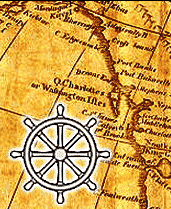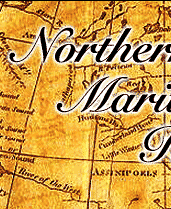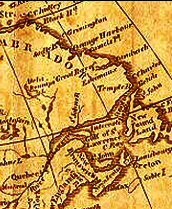There are many public sources of information for researching Canadian shipwrecks.
This page will review and evaluate several of these sources including the Transport Canada Wreck Lists, Transportation Safety Board Inquiries, Canadian Sessional Papers, Great Britain Board of Trade Wreck List, Port of Registry - Vessel Registrations, Regional Newspapers, Registers, Directories, Provincial and Local Museums, Provincial and Local Archives, Local Books on Shipwrecks, Voluntary Organizations, Scuba Diving Shops and Local Boat Charters, plus other sources.
1. Transport Canada Wreck Lists - Transport Canada produced three major lists of marine casualties. After 1980, annual supplements were published by region.
(info. included on Northern Shipwrecks Database CD)
These lists are:
Statement of Shipping Casualties Resulting in Total Loss in the St. Lawrence and Gulf and on the Atlantic Coast from 1896 Up to Date (to 1980) - 185 pages - approx. 3,800 vessels.
Statement of Shipping Casualties Resulting in Total Loss on the Inland Waters Excluding the St. Lawrence River below Montreal, from 1870 Up to Date (to 1980) - 47 pages - approx. 750 vessels.
Statement of Shipping Casualties Resulting in Total Loss in British Columbia Coastal Waters Since 1897 (to 1980) - 76 pages - approx. 1,200 vessels.
Details include vessel name, port of registry, official number, date of loss, place of loss, tonnage and cause, etc. These lists may still be available at no-charge from the Marine Casualties Investigations, Transport Canada, 110 O'Connor Street, 8th Floor, Ottawa, ON. K1A 0N5 (though they may be charging a fee now).
2. Canadian Transportation Safety Board Inquiries - A little harder to locate, this source includes inquiries into many marine casualties. Unfortunately, each inquiry rarely deals with more than one incident. This source is valuable with respect to finer details related to a specific vessel.
3. Canadian Sessional Papers - Each department of the Canadian Government published their annual reports in the volumes of Canadian Sessional Papers. Between 1870 and the mid-1920's, under the Marine & Fisheries Department (name varies), annual lists of shipwrecks appear featuring from 10 to 40 pages each. The volumes of the Canadian Sessional Papers can be located in the Reference section under Government Documents of most major university libraries. With up to 30 volumes produced for a single year, the common Table of Contents and Index in each volume of each year is very helpful in locating these lists.
(info. included on Northern Shipwrecks Database CD)
4. Great Britain Board of Trade Registers and Indexes of Wrecks - 1855 to 1898 - This list is available on a series of 30 volumes that has been reproduced on 14 reels of microfilm by the National Maritime Museum. Information includes British vessels lost throughout the world. The list varies in quality as a result the condition of the original volume, the writer's hand-writing, the format used and the quality of the reproduction.
(some info. included on Northern Shipwrecks Database CD)
As various persons hand-wrote each entry, it is more difficult to read some hand-writing in the earlier years. From 1873 to 1898, the format used is normally of excellent quality, utilizing a combination of hand-written entries regularly pasted over with actual newspaper clippings. These years are easily reviewed as the lists are recorded in chronological order under alphabetized sections. This source should be available on microfilm at major university libraries. Contact the Reference Desk at your local library to request a search for the nearest location and whether this item can be accessed through the inter-library loan or Document Delivery program.
5. Port of Registry - Vessel Registrations - This rarely used source offers a wealth of information for researchers interested in particular regions or vessels. For a vessel owner to receive official documentation on a newly-built or purchased vessel, they would present a list of the owners plus a certification of seaworthiness (vessel survey) at a Port of Registry office... normally at the first major port entered after launch or purchase. The Port of Registry office would record the vessel details, dimensions, builder(s) and the owners, etc. As the 64 shares in the vessel changed hands, the vessel registration would indicate the changes.
(some info. included on Northern Shipwrecks Database CD)
Active volumes of Registry are held in the local offices until the last vessel registration was closed, at which time the registration book was sent to Ottawa and the National Archives. To provide an idea of the scope of this source, Atlantic Canada has represented by 37 Ports of Registry of which 5 began in 1787. As some ports registered more than 300 vessels per year while also documenting the many changes in owners (from 1 to all 64 shares), there can be many volumes for each port. A major disadvantage of this source is that while the initial registration appears on one reel of microfilm, after the page was filled with updates, any change in ownership or vessel alteration, subsequent details may appear on a another reel, with more changes being located on a third, fourth or even fifth reel. Some patience may be required to locate the information sought.
This source, not including those active books, probably involves a few hundred reels of microfilm. The microfilm can be purchased individually through a business working with the National Archives, or possibly accessed through a major library. In Halifax, these microfilm are located on the campus of Dalhousie University in the University Archives on the top floor of the Killam Library.
6. Canadian Navy's Wreck List - Called the `Magnetic Anomalies Detection Data' (aka: the MADD List), this list was produced in 1958 by the Royal Canadian Navy. The list includes 20 legal-length pages (page 20 is missing from my copy) listing about 600 wrecks and their bottom coordinates. Recent attempts to locate this list or an updated version have proved to be fruitless with no Naval department claiming knowledge of any such list.
(info. included on Northern Shipwrecks Database CD)








